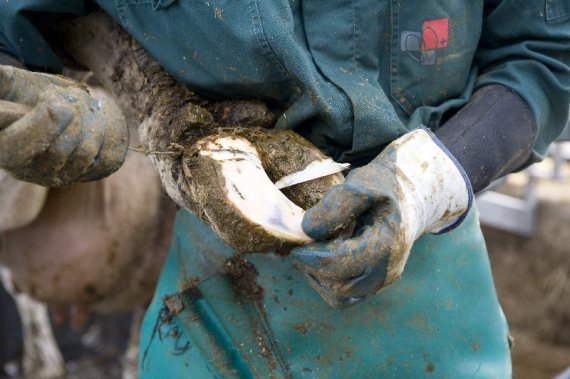Mortellaro is a common culprit: a painful bacterial infection of the claw, which is also highly infectious. Or the cows get sole ulcers, a painful infection of the hoof. ‘If you don’t do anything, the number of claw infections in the herd gradually increases,’ says Van der Spek. ‘You see that in practice too. They are already the third biggest expense for dairy farmers.’
Van der Spek got data on many Holstein cows whose hooves were trimmed regularly. The hoof trimmers assessed the health of the hooves. Van der Spek put these data alongside the genealogical data, enabling her to calculate the proportion of claw health status that was heritable. She found between 2 and 14 percent heritability for six major claw disorders. ‘That is a low percentage. Environmental factors such as the feed and the shed floor have an effect on claw health too.’
Because of these low percentages, it is very time-consuming to improve claw health through genetics. ‘If you only select for milk production, the percentage of cows with sole ulcers goes up by two percent every ten years. By selecting bulls that pass on less sole ulceration to their daughters, you can prevent an increase in sole ulceration, or even reduce the incidence of it.’ And that is of interest to dairy farmers because claw disorders are a big expense as well as a welfare issue. So farmers are keen to do something about it. And that is possible because breeding companies already indicate how their bulls score on claw health.
But there is a price tag on selection for claw health: the cow produces less milk. If dairy farmers want to stop the rise in sole ulceration, their milk production will go down, to be precise by 1.92 kilos of milk protein per cow in ten years. To actually reduce the amount of sole ulceration would cost even more milk production.
But dairy farmers have another method of reducing claw diseases through breeding. They can also pick bulls whose daughters don’t have to have their hooves trimmed so often. Van der Spek calculated a heritability level of nine percent for the need for hoof-trimming, which indicates that this need is genetically determined. A new breeding value for ‘trimming status’ has been established for bulls.

